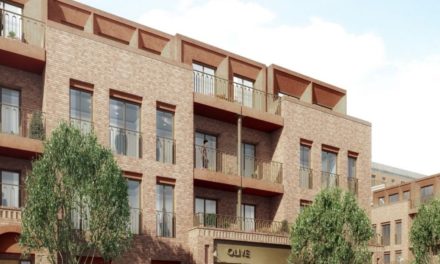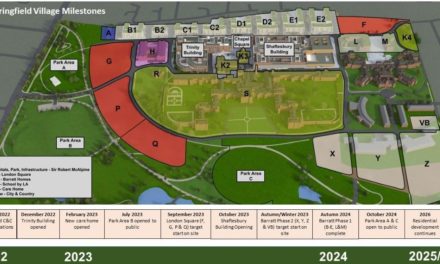London local elections 2022 – Written by Emily Taylor, Senior Account Executive, DevComms.
Labour Party on the defensive in Harrow.
Harrow Borough Council is one council which may cause concern for Labour in the forthcoming local elections. The Labour Party in Harrow recently gained a majority in the 2014 elections and held this slight majority in 2018 elections, however with a series of controversial development decisions, and the introduction of new ward boundaries, the Labour Party may have cause to be concerned about the results this year.
New ward boundaries for Harrow
The Labour Party has held the majority of seats over the Conservative party in Harrow Borough for some years. Although they were expected to lose leadership here in 2018, their surprising win meant that their current majority is a very slim seven seats, with 34 compared to the Conservative Party’s 27.
Recent by-elections in the borough also saw a swing towards the Conservatives, even in typical Tory wards such as Pinner, where their majority increased. If this was to be replicated across the borough in the forthcoming election, this could spell disaster for Labour.
Harrow’s number of seats in the forthcoming elections will have further implications on Labour’s chances, as they will be reduced from 63 to 55, including the introduction of a new ward with two new seats. This will mean that there are eight less seats available.
Labour’s existing seats in Harrow may not be as secure as in previous years, but Labour councillors will benefit from less seats being available in traditional Conservative wards such as Hatch End and Belmont.
It is these typical Conservative wards, with the addition of a series of other marginal wards, which will make Harrow a key battleground borough in the May 2022 elections:
- Headstone (a new combined ward comprising both Headstone North and Headstone South)
- Wealdstone South (created from Wealdstone ward and Marlborough ward)
- Wealdstone North (created from Wealdstone ward)
- North Harrow (a new ward with two seats)
It is predicted that the new North Harrow ward will receive a strong Labour vote in its first local elections, located in a traditional Labour area. However, the additional seats made available in Wealdstone (now split into Wealdstone North and South), alongside the controversial new regeneration project in the area, may be a problem for the Labour Group moving forward.
Strategic Development Partnership
The new Strategic Development Partnership with Wates Residential has been a controversial proposal for Harrow Borough Council, as residents and the Harrow Conservatives argue that this regeneration project will cost millions of pounds with no beneficial return. The £690 million programme for the scheme sets to build housing on three large underused urban sites in Wealdstone in the next 10 years, including 1,500 affordable homes, a new civic centre, and commercial space with associated green infrastructure.
This partnership comes as a result of the Council’s change of approach from its previous regeneration strategy, after it was forced to write off £7.2 million of costs after the Covid-19 pandemic.
Councillor Pritesh Patel (Con) argued at a recent cabinet meeting that writing off the previous regeneration scheme to replace it with a much more costly scheme represents “endemic problems in how projects and resources are managed in the council” and that “the previous regeneration projects have totally failed”.
Councillor Natasha Proctor (Wealdstone, Lab) stood in support of the Development Partnership and the forthcoming scheme and argued that there is clear need for regeneration in Harrow and Wealdstone. This is a statement which could prove costly in the forthcoming elections, as residents in Wealdstone are seemingly unconvinced by the plans to develop across the area.
Public opinion of the scheme has further diminished after financial issues meant that the project will have to be amended to move ahead; with a need to either reduce the number of affordable homes or increase the number of properties. This comes after the £690 million cost of development was deemed not financially viable.
Labour candidates in Harrow’s forthcoming local election will likely face a challenge where regeneration and planning remains a deemed failure of the Labour Party in the previous years.
Demographic issues
Demographics in Harrow are another factor which may be costly for Labour this May. It is of note that a large percentage of the population of Harrow is Gujrati Hindu, who have very loyal ties with the Prime Minister of India, Narendra Modi.
In 2021, there were allegations made by opposition parties that the Labour Party was not in support of Modi, including a Labour candidate’s by-election leaflet featuring Modi shaking hands with Boris Johnston, and the quote “Don’t risk a Tory MP who is not on your side”. This was seen as “anti-India”, and sparked a backlash amongst much of the Hindu population against Labour.
In an area where every vote will count, and with a large Gujrati Hindu population, the impact that this has had remains to be seen.
Conclusions
To conclude, although London-wide polling indicates it is unlikely that Labour will lose leadership of Harrow in May, success for the Conservatives is becoming more of a possibility in a borough where the majority is marginal, and development has been at the forefront of most political debate. It is also of note that the Planning Committee in Harrow has been increasingly Conservative led, as Labour struggles to maintain seats on the committee.
For development, this means a firmer eye on greenbelt sites, development partnerships and planning enforcement in the area.
© London West (powered by ukpropertyforums.com).
Sign up to receive your free bi-weekly London West journal here








